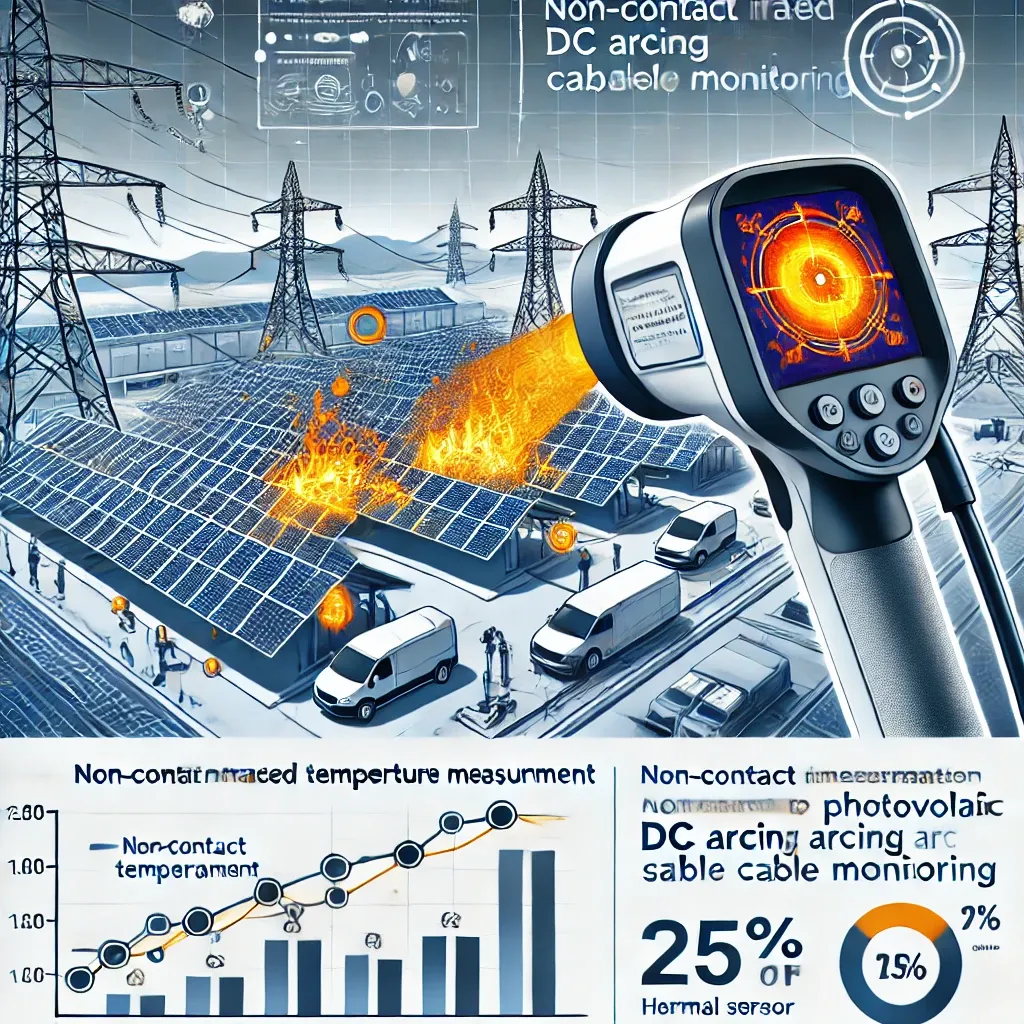Time: 2025-03-16 12:34:20 Source: Henan Province Jianyun Cable Co., Ltd.

In photovoltaic (PV) power stations, DC arcing cables are critical for energy transmission. However, harsh operating environments and overloading conditions often lead to cable overheating, posing significant safety risks. This study proposes a non-contact infrared temperature measurement method to monitor the heating of DC arcing cables, which effectively detects potential overheating issues and prevents system failures.
Traditional methods, such as gas sensor arrays and surface temperature sensors, have limitations:
The non-contact infrared temperature measurement technology overcomes these issues by directly capturing the thermal radiation of cables, allowing real-time monitoring without physical contact.
The method relies on the Stefan-Boltzmann Law, which relates the radiation intensity to the surface temperature:
Q = σ × δ × (T₁ - T₂)
where:
The system uses a matrix-type infrared temperature measuring device to capture thermal images and detect abnormal heat spots caused by cable overheating or poor connections. Advanced image denoising techniques like Gaussian filtering and histogram equalization are applied to enhance accuracy.
The relative temperature difference method is applied to detect overheating areas:
γ = [(T₃ - T₄) - (T₅ - T₄)] / (T₃ - T₄) × 100%
where:
| Monitoring Attempt | Proposed Method (℃) | Gas Sensor Method (℃) | Surface Sensor Method (℃) |
|---|---|---|---|
| 1 | 110.85 | 110.98 | 112.01 |
| 2 | 110.92 | 111.15 | 115.25 |
| 3 | 110.88 | 111.24 | 113.99 |
| 4 | 110.95 | 115.90 | 117.43 |
| 5 | 110.90 | 111.52 | 114.30 |
| 6 | 110.87 | 111.37 | 116.89 |
| Average | 110.90 | 112.03 | 114.99 |
Photovoltaic DC Cable Monitoring, Non-Contact Temperature Measurement, Infrared Thermal Imaging, Overheating Detection, Cable Safety Monitoring
1. Hu Mengjie (2024). Heat Monitoring of Photovoltaic DC Arcing Cable Based on Non-Contact Temperature Measurement Technology. Wire & Cable, No.6, 2024. DOI: 10.16105/j.dxdl.1672-6901.202406006